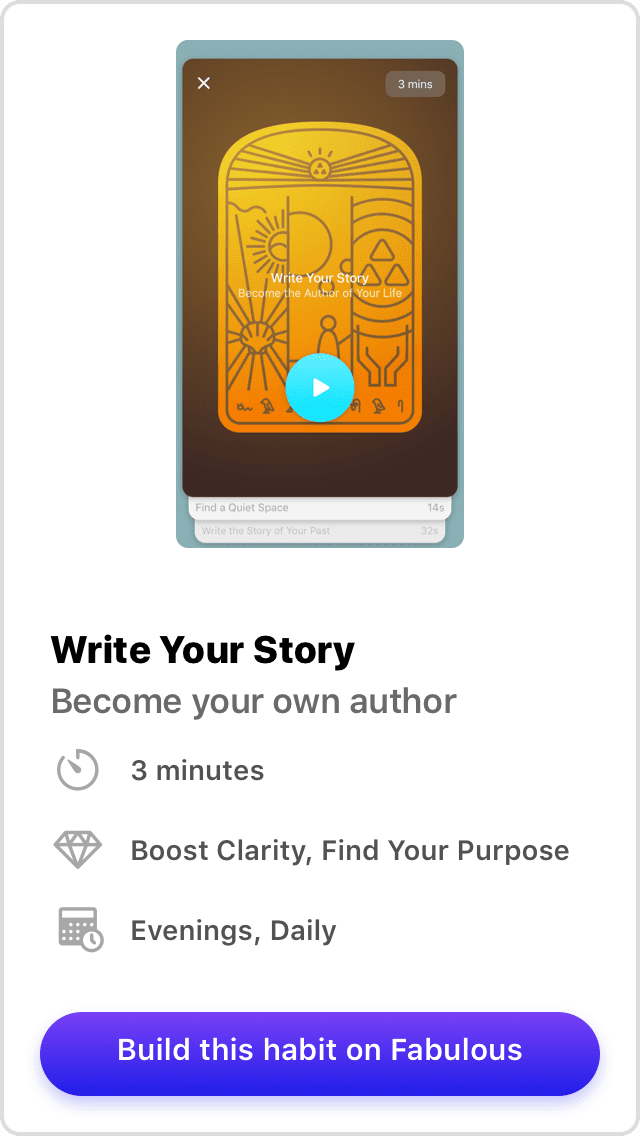Take a minute to think about what you did to get ready this morning. Maybe you jumped right out of bed, brushed your teeth, and had a healthy breakfast. Maybe you hit the snooze button once or twice. Whatever your morning routine looks like, ask yourself this: How much of it did you consciously think about while you were doing it?
Chances are, you didn’t think much at all! That’s the beauty of habits; they’re behaviors we can act out without even thinking about them. According to Gretchen Rubin, author of Better Than Before, habits are the invisible architecture of our everyday lives. Your habits drive your daily actions for better or worse. If you want to change yourself, you must first change your habits.
But that’s easier said than done. Anyone who’s attempted to form a habit–or break one–knows just how difficult it can be. It can be done, however; it just takes patience, diligence, and a heaping dose of self-awareness.
A support system doesn’t hurt, either. Fabulous can guide you through building lifelong habits and all it takes to start is a daily glass of water. Download the app and start The Unexpected Journey today!
Why Habits Matter
Habits are made up of cues, responses, and rewards; a more detailed explanation on habit loops can be found on our blog here.
What’s most important to keep in mind is that habits are effortless. They require no self-control or decision making on your part. In effect, you’ve already decided multiple times over to complete the habit; that’s how it became a habit in the first place!
Self-control is a finite resource. If you constantly have to exert willpower to accomplish even simple tasks, you’ll exhaust yourself. In fact, decision fatigue is a very real phenomenon that can force you to fall back on old habits, good or bad, when you’re tired from having to make choices all day.
These habits make up not just what you do, but who you are. Rubin herself said it best: What you do every day matters more than what you do once in a while.
The Three Pillars of Habit Change
Gretchen Rubin discusses three pillars of behavior change in Better Than Before. The first is Foundations, or discovering what matters most to you. This comes from better understanding who you are and what you value.
The second pillar is Scheduling. Doing something consistently is the easiest way to program it into your brain as an automatic behavior. How you make that consistent effort depends on what works best for you. For example, if you work irregular shifts, exercising first thing in the morning might not always be possible. However, what if you exercised during your first free hour of the day? It might not be the same time every day but it’ll be far easier to maintain the habit than trying to force a workout when it’s just not possible.
Finally, the remaining pillar is Monitoring. Keeping track of your habits is the only way to definitively determine whether or not you’re improving.
TIP: Using a habit tracker like Fabulous can take a lot of the hard work out of monitoring your daily routines. Plus, once you start a chain of completed habits, you won’t want to break it!
How to Build or Break a Habit
Know Your Tendency
In Better Than Before, Rubin identifies four personality types that would later be expanded into their own book, The Four Tendencies.
1. Upholders
2. Questioners
3. Obligers
4. Rebels
These tendencies reflect how you react to expectations, both your own and those of other people. Knowing how you respond to expectations can be a powerful asset for behavior change. For example, if you’re an obliger, making sure you have an external source of accountability can be the sole difference between success and failure!
Knowing yourself is the first and most valuable step to understanding what works for you and what doesn’t when it comes to changing your behavior. Take a moment to reflect upon who you are with Fabulous’s Write Your Story training. Look for it in the Sit and Think section of Make Me Fabulous.
Make it Easy
Which scenario do you think would make you more likely to go work out: Hiding your workout clothes in the back of your closet or laying them out in a visible place? Would you feel more inclined to eat a salad if it was made ahead of time? When you make the habits you want to have easier to do, you’re more likely to do them.
Alternatively, if you’re trying to break a bad habit, make it harder to do. You can’t binge on unhealthy processed snack foods if you don’t keep any in your house, for example.
Stack Habits and Bundle Temptations
If you’re having trouble completing a habit, combine it with another habit. For example, if you want to start flossing before bed, combine it with something else you already do, like brushing your teeth. Brushing your teeth would then become your cue to floss.
Or, consider bundling your healthy habit with a temptation to increase the incentive to do it. When behavioral economist Dan Ariely suffered terrible burns to his body from an accident, he had to take medicine that made him feel sick and nauseous. He knew he needed the medicine, however, so he bundled the unpleasant habit with something he enjoyed: watching movies.
The Takeaway
Better Than Before is one of Gretchen Rubin’s many fantastic books that helps readers better understand their own behavior. She also provides tools to help you shape the reality you want within your own personal framework. If you read and enjoyed it, we also recommend you check out The Four Tendencies, which further expands upon the tendencies mentioned in this article.





